SLVAFK5A December 2023 – February 2024 LM5177 , LM51770
4.3.2 Comparison Between Single Phase and Dual Phase Operation
The thermal images are taken for both single-phase and dual-phase operations, to verify the thermal efficiency of the dual-phase operation. The thermal tests are taken for single phase and dual phase in buck, buck-boost, and boost operation at variable load. The thermal images from Figure 4-19 to Figure 4-34 show that the dual-phase operation has a lower temperature in comparison to the single-phase operation at the same load profile. The equal load sharing of the total load current among two converters in dual phase results in less thermal losses and enhance the overall thermal efficiency of the converter.
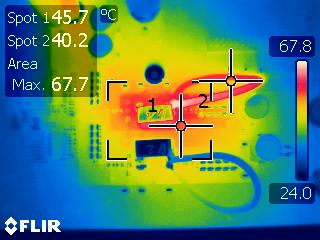 Figure 4-19 Thermal Condition in
Single Phase Boost (VIN=8 V and 4 A Load)
Figure 4-19 Thermal Condition in
Single Phase Boost (VIN=8 V and 4 A Load)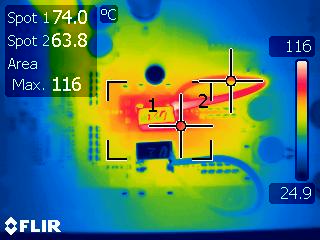 Figure 4-21 Thermal Condition in
Single Phase Boost (VINVin=8 V and 6 A Load)
Figure 4-21 Thermal Condition in
Single Phase Boost (VINVin=8 V and 6 A Load)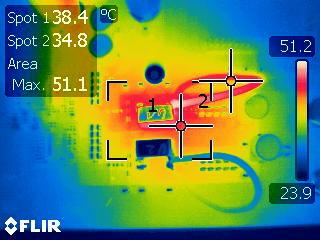 Figure 4-23 Thermal Condition in
Single Phase Boost (VIN=10 V and 4 A Load)
Figure 4-23 Thermal Condition in
Single Phase Boost (VIN=10 V and 4 A Load)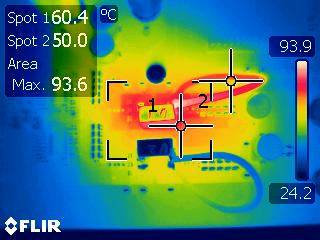 Figure 4-25 Thermal Condition in
Single Phase Boost (VIN=10 V and 7 A Load)
Figure 4-25 Thermal Condition in
Single Phase Boost (VIN=10 V and 7 A Load)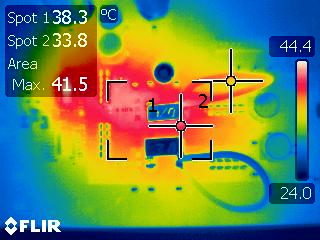 Figure 4-27 Thermal Condition in
Single Phase Buck-Boost (VIN=16 V and 4 A Load)
Figure 4-27 Thermal Condition in
Single Phase Buck-Boost (VIN=16 V and 4 A Load)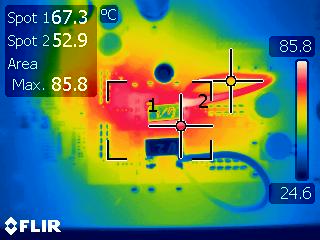 Figure 4-29 Thermal Condition in
Single Phase Buck-Boost (VIN=16 V and 9 A Load)
Figure 4-29 Thermal Condition in
Single Phase Buck-Boost (VIN=16 V and 9 A Load)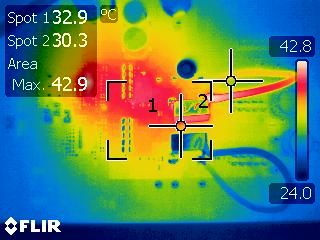 Figure 4-31 Thermal Condition in
Single Phase Buck (VIN=24 V and 4 A Load)
Figure 4-31 Thermal Condition in
Single Phase Buck (VIN=24 V and 4 A Load)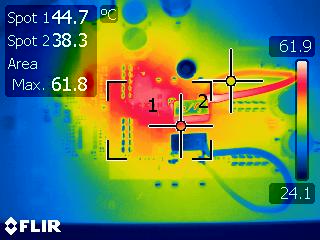 Figure 4-33 Thermal Condition in
Single Phase Buck (VIN=24 V and 9 A Load)
Figure 4-33 Thermal Condition in
Single Phase Buck (VIN=24 V and 9 A Load)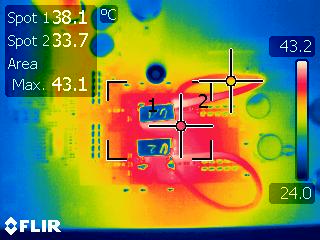 Figure 4-20 Thermal Condition in Dual
Phase Boost (VIN=8 V and 4 A Load)
Figure 4-20 Thermal Condition in Dual
Phase Boost (VIN=8 V and 4 A Load)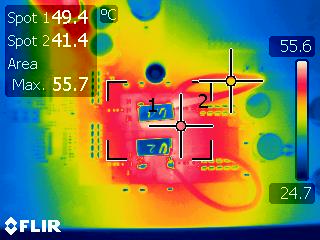 Figure 4-22 Thermal Condition in Dual
Phase Boost (VIN=8 V and 6 A Load)
Figure 4-22 Thermal Condition in Dual
Phase Boost (VIN=8 V and 6 A Load)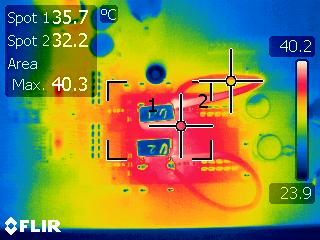 Figure 4-24 Thermal Condition in Dual
Phase Boost (VIN=10 V and 4 A Load)
Figure 4-24 Thermal Condition in Dual
Phase Boost (VIN=10 V and 4 A Load)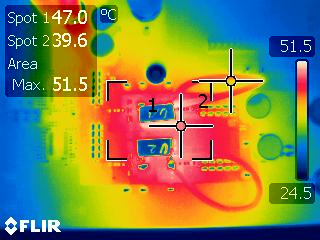 Figure 4-26 Thermal Condition in Dual
Phase Boost (VIN=10 V and 7 A Load)
Figure 4-26 Thermal Condition in Dual
Phase Boost (VIN=10 V and 7 A Load)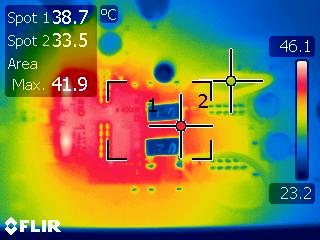 Figure 4-28 Thermal Condition in Dual
Phase Buck-Boost (VIN=16 V and 4 A Load)
Figure 4-28 Thermal Condition in Dual
Phase Buck-Boost (VIN=16 V and 4 A Load)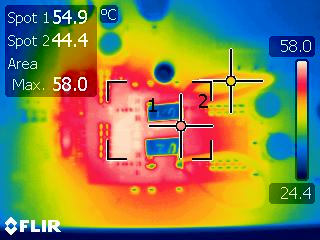 Figure 4-30 Thermal Condition in Dual
Phase Buck-Boost (VIN=16 V and 9 A Load)
Figure 4-30 Thermal Condition in Dual
Phase Buck-Boost (VIN=16 V and 9 A Load)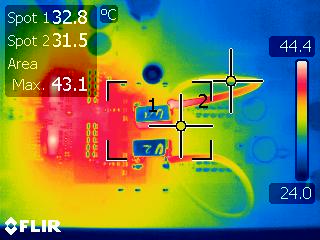 Figure 4-32 Thermal Condition in Dual
Phase Buck (VIN=24 V and 4 A Load)
Figure 4-32 Thermal Condition in Dual
Phase Buck (VIN=24 V and 4 A Load)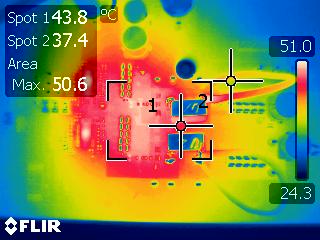 Figure 4-34 Thermal Condition in Dual
Phase Buck (VIN=24 V and 9 A Load)
Figure 4-34 Thermal Condition in Dual
Phase Buck (VIN=24 V and 9 A Load)